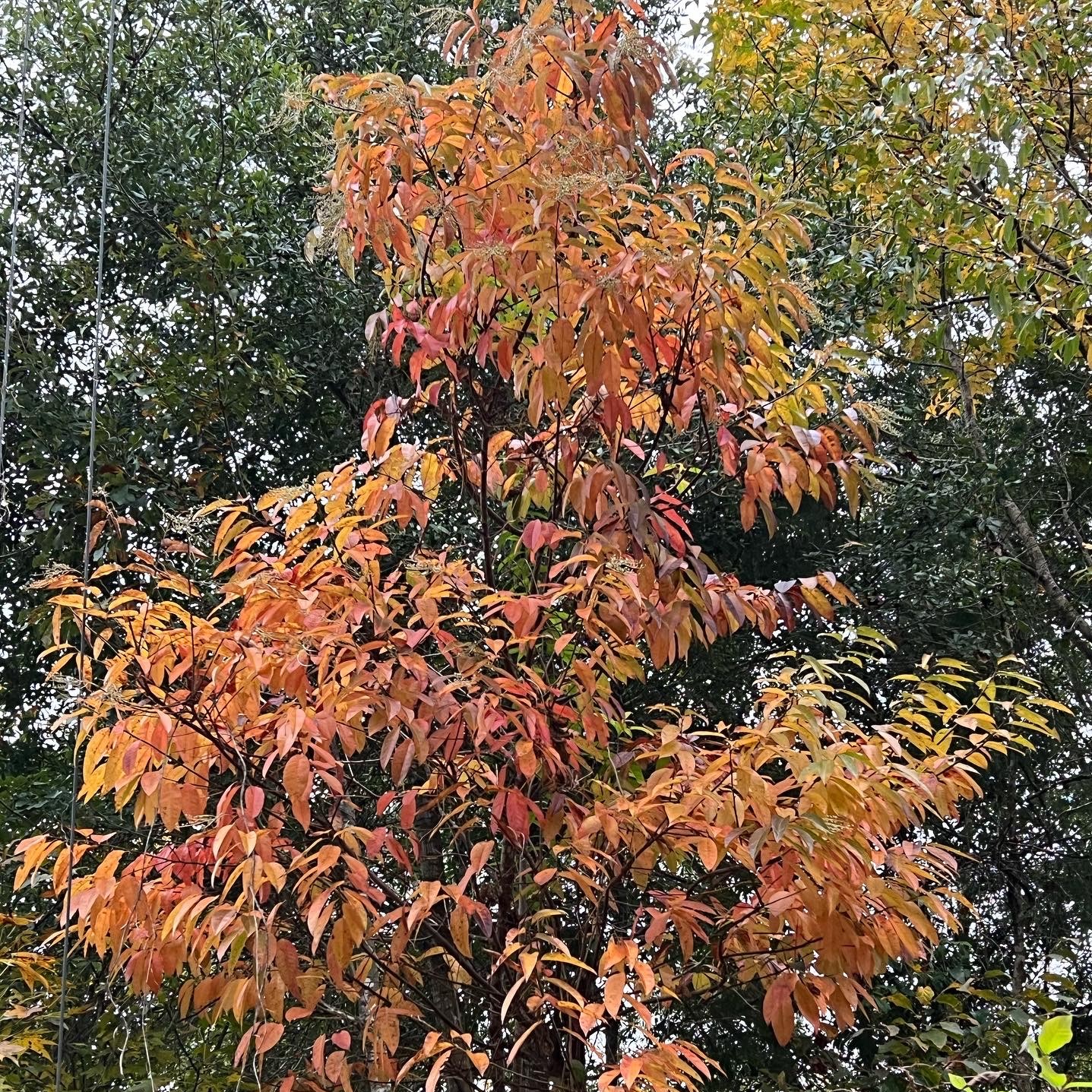I do enjoy seeing the many photos of autumn foliage shared by my friends who travel the East Coast this time of year. However, it does bother me when folks say things like, “wish we had fall colors like that down south.” Harrumph! Or as Winnie-the-Pooh would say, “Oh Bother”.
No, we don’t have the vast hillsides of red, orange, and yellow foliage, but we do have our own fall colors if only we took the time to notice. Looking past the bright colors of our fall wildflowers, like the yellows of goldenrods and sunflowers, the whites of boneset and groundsel, the blues of mistflower and blazing star, and the pinks of false foxgloves, many of our southern forest trees put on their own show of color.
Black Gums show us their reds and oranges, beginning in September and peaking in October, giving away their presence in the sea of greens of our largely evergreen forests. Red Maples soon follow suit, with a range of shades of red to golden browns. Few trees are brighter in color on a crisp fall day than a bright Red Maple. Add Sweetgum to the parade of colors, with their bright yellow leaves.
One of my all-time favorites is the long, yellow-to-red leaves of Sourwood (title photo) that drape down from their branches. As with Black Gums, they pop into view in the sea of green. Winged Sumac becomes bright red/orange at about the same time. Even the copper-brown colors of Bald and Pond Cypress can be dramatic along roadsides and in the wet forest they prefer.

As fall ends, the bright yellows of hickories make their presence known, as do the stems of Elliot’s Blueberry, changing from green to bright red/orange. And not to be outdone, American Beech leaves turn from green, to yellow, to copper-brown and persist throughout our winter, making them stand out among the leafless trees around them.
But lest we ignore the basic colors of our natural world, the green of evergreen trees, like pines and Live Oaks, is also a color and can be equally beautiful, especially as it provides contrast for the bright colors of deciduous trees. So, if you are like me and cannot visit the “East Coast Show” of fall colors, stop and enjoy our own show. If we really think about it, our show is as beautiful as anywhere else in the world, if we take the time to look.
Hope to see you in our great outdoors!